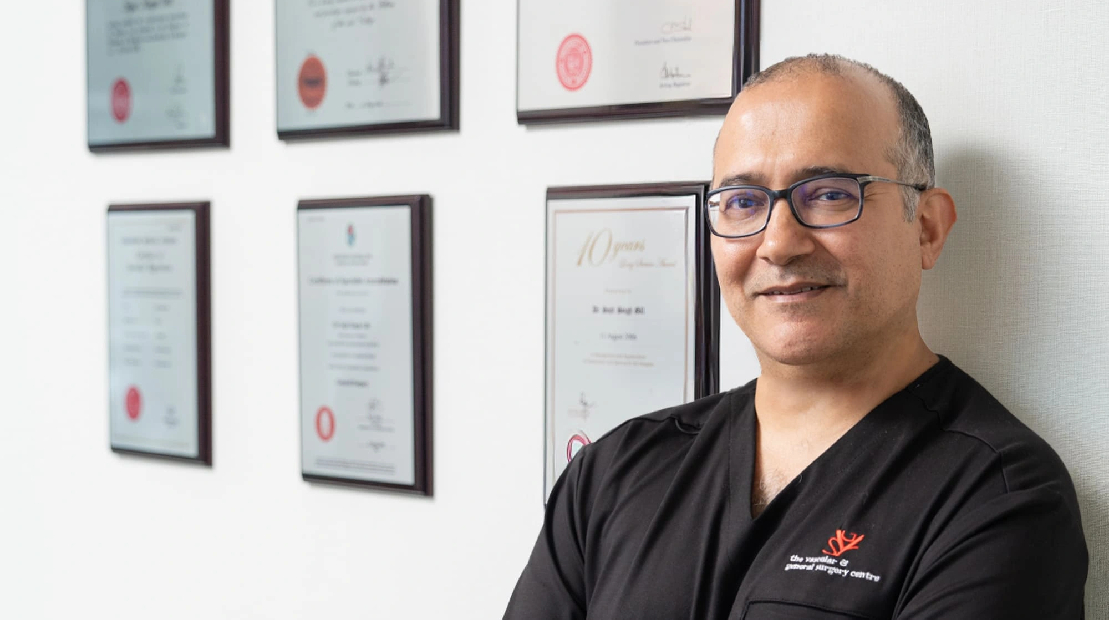Spider veins, or telangiectasia, are tiny blood vessels near the skin’s surface that often form fine, web-like patterns. While usually harmless, they can impact confidence and appearance. Laser therapy has become a popular and effective method for treating these veins.
In this article, Dr Sujit Singh Gill explains how laser treatments work, their benefits, and what patients can expect.
What Is Laser Treatment for Spider Veins?
Laser treatment for spider veins is a minimally invasive procedure using focused beams of light (laser) to target and eliminate visible veins without harming surrounding skin and tissues.
Types of Laser Treatment
- Surface Laser Treatment: This method specifically targets superficial spider veins located on the face and legs.
- Endovenous Laser Therapy (EVLT): For deeper or larger spider veins, EVLT involves inserting a tiny laser fibre directly into the affected vein to seal it from within.
Who Is a Good Candidate?
Laser therapy suits most patients with visible spider veins, especially those seeking a non-surgical approach. Ideal candidates have small to medium-sized veins without severe underlying venous issues.
However, it is important to undergo a thorough assessment to determine suitability and rule out underlying vascular conditions.
How Does Laser Treatment Work?
Laser treatment for spider veins works by generating focused heat that precisely targets the haemoglobin inside the problematic veins. This heat causes the vein walls to collapse and seal shut. Over time, the body naturally reabsorbs the sealed veins, making them gradually fade from view.
Procedure Steps
- Assessment: A vein specialist will evaluate your veins, often using a Duplex ultrasound or a clinical examination, to determine the best approach.
- Preparation: To minimise discomfort during the procedure, a local anaesthetic cream may be applied to the treatment area.
- Laser Application: Short, controlled pulses of laser light are then directed at the targeted veins.
- Post-Procedure: You might experience mild redness or swelling in the treated area, but this typically resolves quickly.
Recovery and Aftercare
After laser therapy, patients can usually resume normal activities immediately. Your doctor may advise the following to support healing and achieve the best results:
- Protect treated areas from sun exposure by applying sunscreen regularly.
- Avoid intense heat sources, such as hot baths or saunas, for 1 to 2 weeks.
- Wear compression stockings if recommended, to help support vein healing.
Benefits of Laser Treatment for Spider Veins
Laser treatment for spider veins offers several advantages, making it a popular choice for many patients:
- Minimally Invasive: The procedure involves minimal discomfort, as it targets veins precisely without large incisions.
- Quick Sessions: Treatment sessions are typically brief, often lasting only 15–30 minutes.
- No Downtime: Patients can usually return to their normal daily activities immediately after the procedure.
- Effective and Safe: It is an effective and safe option for various skin types, providing good cosmetic outcomes.
Why Choose Dr Sujit Singh Gill
Dr Sujit Singh Gill brings over 20 years of vascular surgery experience to his practice, offering expert care for spider vein removal. He leverages advanced laser technology for precise, effective treatments, ensuring accurate diagnoses and optimal outcomes. Patients benefit from his individualised, patient-centred approach within modern, comfortable facilities in Singapore.




